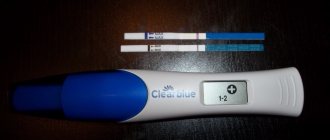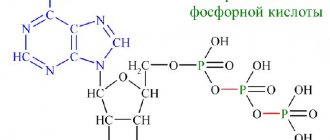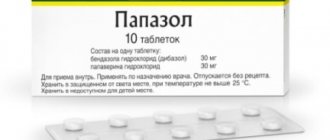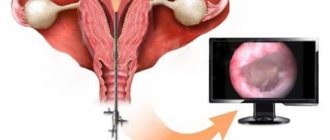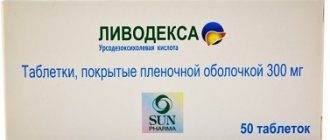One of the most vivid childhood memories. I am 12 years old. Hot summer afternoon. My friend Lena and I are drowning in the middle of the city pond. She has long since disappeared under the water, and with the last of my strength I drag her by the hair and choke myself. Finally they noticed us. Someone’s strong arms support me, I pull Lenka’s head to the surface and see that there is water in her wide-open eyes... Someone helps me go ashore, someone carries out limp Lenka and puts her on the sand. Someone is giving her artificial respiration...
Children do not believe in death, and especially in death so sudden. Therefore, when we shouted to Lenka through the intensive care window, and then when we met her at the hospital gates, we didn’t even think that a miracle had happened before our eyes. It may be repeated a thousand times, but it is a miracle. After all, when Lenka was pulled out of the water, she was already dead...
First, let's agree on terminology
.
Sudden death is death that occurs within a few minutes or seconds against the background of complete health (or non-life-threatening illnesses).
During thanatogenesis (the process of dying) there are a number of stages, including:
Clinical death is a condition in which spontaneous breathing and cardiac activity cease. At the same time, metabolic processes in organs and tissues (primarily in the brain) continue. The state of clinical death is reversible; with timely help, a person can be saved.
Brain death (social death, vegetative status) is a condition in which the cerebral cortex has irreversibly died. In this case, cardiac activity and, in some cases, breathing may be maintained. But consciousness will never return to such a person, although he can live (more precisely, exist) indefinitely. Brain death is diagnosed mainly by EEG. In out-of-hospital settings, such diagnosis is impossible.
Biological death is the cessation of metabolic processes in organs and tissues and the beginning of the process of decay. Irreversible death.
The duration of clinical death (that is, the time interval from the cessation of breathing and heartbeat to biological death) averages 5-6 minutes. This time increases to 7-8 minutes in children and decreases to 3-4 minutes in old people. It also depends on the causes and circumstances of death: the more severe the disease and the longer the agony, the shorter the clinical death. In cases of death from blood loss, from multiple injuries, or in some poisonings, there is no clinical death as such—decay begins almost before breathing stops. But in the cold (hypothermia, drowning in ice water), the duration of clinical death lengthens, according to various sources, from 15 minutes to 1-2 hours.
There are many diseases (mostly cardiovascular) that can lead to sudden death. But in out-of-hospital settings, the most common cause of sudden death is accidents. People drown - in open water and in their own bathtubs. Babies are drowning not only in front of their eyes, but literally in the arms of their parents. Drunk people drown in puddles - however, sober people also drown if they happen to hit their head when falling. People suffocate after choking on a piece of bread or getting tangled in fishing gear. Children suffocate with a plastic bag over their heads. People are dying from electric shock, dying from poorly heated stoves. Reflex cardiac arrest looks scary and incomprehensible to others - when the cause of death turns out to be a slight, essentially a blow to the stomach or a short-term compression of the throat.
As a rule, in cases of sudden death caused by accidents, there are still a few minutes to save the person. But we must remember that in such cases, delay is truly like death.
First aid
First aid always begins with stopping the effect of the damaging factor. It seems unnecessary to even repeat such banal truths, and yet... It’s hard to imagine that someone tried to pump out a drowning man without lifting him from the bottom, but I heard how in the confusion they tried to give artificial respiration to a hanged man, forgetting about the noose covered with a wide collar ... So, I repeat: first aid begins with stopping the effect of the damaging factor. Remove the drowned person from the water, take the burnt person out into the fresh air, unplug the electric shock victim...
After this, you should move on to the actual assistance.
Treatment usually begins with diagnosis. So in this case, first you need to make sure that the victim does not just have a deep faint. Let me remind you that the criteria for clinical death are the absence of consciousness, breathing and cardiac activity. At the first glance at the victim, one is struck by his immobility, pallor (sometimes cyanosis or earthy tint of the skin). Skeletal muscles are relaxed, which sometimes manifests itself in an unnatural posture (“like a broken doll”). Sometimes during clinical death there are convulsions. This phenomenon is very rare, but it must be remembered. I know a case when people around were in no hurry to call a doctor to a person, mistaking his condition for an epileptic seizure - and he died... The absence of breathing can be judged “by eye” - by the absence of respiratory movements of the chest. Subtle methods like holding a mirror or fluff to your lips are used mainly in movies, but in life they are a waste of time. The presence or absence of cardiac activity is determined by the pulse in the carotid artery, on the side of the neck. The absence of a pulse on the radial artery (on the wrist, at the traditional “pulse point”) is not indicative; it may not be there even in a completely living person, for example, in shock.
Diagnosis is followed by treatment, in this case resuscitation measures. These include artificial respiration and chest compressions.
When not to perform resuscitation
In addition to indications, there are also contraindications to cardiopulmonary resuscitation. These include:
- Death resulting from a long-term, debilitating disease (liver cirrhosis, end-stage renal failure, severe pathologies of the heart and lungs);
- Death due to incurable diseases (malignant neoplasms, amyotrophic lateral sclerosis, congenital malformations, etc.);
- Damage incompatible with life;
- Signs of biological death;
- Fractures of several ribs and sternum with massive bleeding from the chest are a contraindication for performing chest compressions.
Biological death is determined by the following manifestations:
- Cloudiness of the eyes, the appearance of a whitish coating on the pupils and iris due to drying out of the cornea.
- Deformation of the pupil when lateral pressure is applied to the eyeball - it becomes slit-like.
- The formation of purple cadaveric spots in the underlying parts of the body, which is associated with the redistribution of blood in the vascular bed.
- The body is cold to the touch.
- The muscles of the body are hard, it is difficult to straighten the bent limbs - rigor mortis has set in.
Artificial respiration
Currently, the only method of artificial respiration used is “mouth to mouth” (in case of injury to the lips or oral cavity, “mouth to nose”, and when assisting a small child, “mouth to mouth and nose”). In this case, it is necessary first of all to restore the patency of the upper respiratory tract - straighten the neck as much as possible, lift the chin, and slightly bring the lower jaw forward. Sometimes, due to excessive muscle relaxation, the victim’s tongue sinks in; it must be carefully brought back to its normal position. If necessary, you need to clean the oral cavity - there may be vomit, blood clots, knocked out teeth, and for drowning people, sand, mud, algae... All this must be carefully removed with your finger. It is also advisable to loosen a too-tight collar and belt, or better yet, remove clothing from the upper half of the body altogether.
Artificial respiration itself is performed as follows. The rescuer holds the victim’s lower jaw with one hand, pinches his nose with the fingers of the other hand, takes a deep breath, tightly wraps his lips around the victim’s lips (for aesthetic and hygienic reasons, you can cover your lips with some kind of fabric, such as a scarf) and exhales. At the same time, air enters the victim’s lungs - for him this is an inhalation. Then the rescuer moves away and passive exhalation occurs. As you inhale, the victim’s chest should rise by 2-3 cm (correspondingly less for a child). If the chest is motionless and the cheeks are swollen, it means that the patency of the upper respiratory tract is impaired. The simplest thing that can be done here is to more carefully repeat the hyperextension of the neck, protrusion of the lower jaw, and protrusion of the tongue. This almost always helps, unless we are talking about obstruction (blocking) of the larynx with a foreign body. If swelling appears on the left under the victim’s ribs and increases with each breath, this means that some of the air enters the stomach. In this case, you need to remove it by gently and carefully pressing on this place with your palm. A common mistake made by rescuers is the desire to exhale as vigorously as possible. This may be correct if the rescuer and the victim are close in size. But if, for example, help is provided to a child, inhaling too hard can cause acute swelling of the lungs or even their rupture. You need to focus specifically on the expansion of the victim’s chest.
CPR using medications and equipment
According to the rules for conducting cardiopulmonary resuscitation at stage D, medications are used. For this purpose use:
- Adrenaline (epinephrine).
- Atropine.
- Antiarrhythmics (lidocaine, amiodarone).
- Infusion systems.
Adrenaline has a vasoconstrictor effect due to its effect on beta adrenergic receptors. As a result of this effect, blood pressure rises and heart rate increases. The use of epinephrine in patients with asystole is justified.
After the rhythm appears, they resort to restoring it. In case of bradycardia, atropine is effective, and in case of ventricular fibrillation, lidocaine or amiodarone.
To carry out resuscitation as quickly as possible, venous access is provided by installing a peripheral catheter through which all medications are administered into the vein.
To effectively perform cardiopulmonary resuscitation, fluid therapy is mandatory. For this purpose, sodium bicarbonate is used, which replenishes the volume of circulating blood and normalizes the homeostasis system.
If medications are ineffective, defibrillation is used. To carry it out, the patient is placed on a hard surface without current conductors and the chest is freed from clothing. A special paste is applied to the electrodes and the device is connected to the network. The shock level is set to 200 J and the electrodes are pressed to the victim’s chest.
If necessary, the discharge value is increased to 360 J with the use of medications. The indications for the procedure are ventricular fibrillation and pulseless ventricular tachyarrhythmia.
Indirect cardiac massage
The first thing to do is to shift the victim onto something hard (on the floor, on the edge of the bed). This is a very important point that is not always remembered in a hurry. Indirect cardiac massage on a soft base is both ineffective and dangerous! It can cause liver rupture and other abdominal injuries.
The rescuer should stand to the side of the victim. If he is lying on the floor, the rescuer usually kneels. The arms are extended as much as possible at the elbows in order to more effectively use the strength of the shoulder girdle and the entire body. The base of the palm of one hand is placed on the victim’s sternum between the middle and lower third, the second palm is placed on the first. The rescuer's fingers should not touch the victim's chest; failure to do so can result in rib fractures. Next, the rescuer presses on the sternum with pushes directed strictly vertically downwards. The pressure should be such that the chest bends by 4-5 cm. In this case, the heart is compressed between the sternum and the spine, and blood is pushed out of it into the blood vessels. Indirect cardiac massage is hard physical work, so it is performed not with hand movements, but with the weight of the whole body. If assistance is provided to a child, then significantly less pressure is required. For children under 10 years of age, pushes are performed with one hand, for infants under 1 year of age - with two fingers. If the victim is an elderly person, then 1-2 broken ribs are considered normal. But a fracture of the sternum is a dangerous complication. To avoid this, you should not place your palms too close to the lower end of the sternum.
As a rule, in case of clinical death, a person needs both artificial respiration and chest compressions. If possible, it is better for two rescuers to provide assistance at the same time. In this case, one breath should correspond to 4-5 heart beats, that is, every 4-5 beats one rescuer should interrupt the heart massage and give way to the second. But in life it’s good if at least one of those present knows resuscitation techniques, and one person will not have time to work at such a pace. If there is only one rescuer, then 1 breath per 8-10 pushes and even less is considered normal. I have heard the opinion that even 4 full deep breaths in 1 minute (that is, 1 breath per 15 pushes) is enough to maintain life.
The criteria for the correctness and effectiveness of resuscitation measures are the restoration of the normal color of the skin, the appearance of a pulse in the carotid (and ideally also in the radial) arteries, and the appearance of the pupillary reflex. The latter should be discussed in more detail. Skin color is not a very obvious criterion, and determining the presence of a pulse against the background of chest compressions is quite difficult, and impossible for one rescuer alone, but the pupillary reflex is determined easily and quickly and at the same time is quite informative - its presence is a sign of life. So, to determine the pupillary reflex, you need to open the victim’s eyelids and cover the eye with your palm for 2-3 seconds, then quickly remove it. If the pupillary reflex is present, then it is clearly visible how the dilated pupil quickly narrows. The pupillary reflex is especially obvious in bright light; in low light conditions, you should use a flashlight if possible. The only situation where the pupil is dilated and does not respond to light in a living person is blindness. Usually, if resuscitation measures are performed correctly, the pupillary reflex is restored within 1-2 minutes.
Indicators of effective CPR
While performing CPR, you need to continuously monitor the patient’s condition: monitor whether he has begun to breathe on his own, or whether pulsation of the arteries has appeared. Criteria for the effectiveness of resuscitation measures:
- The appearance of a pulse in the carotid arteries, and then in the radial and other great vessels;
- The appearance of independent respiratory movements;
- Constriction of pupils to light;
- Restoration of the physiological color of the skin, lips;
- Increase in systolic (upper) blood pressure to at least 60 mm Hg. Art.
As a rule, if the resumption of vital activity does not occur within 10 minutes, then full recovery cannot be expected. During this time, under hypoxic conditions, some of the nerve cells die, which leads to an irreversible loss of their functions.
Reference!
The cerebral cortex is the evolutionarily “youngest” part of the brain, so it begins to die first during hypoxia. Consequently, with prolonged CPR, higher brain functions - thinking, memory, speech - will be the first to suffer.
How long to perform resuscitation measures?
At one time I came across a wonderful formulation: “Resuscitation measures should be carried out until spontaneous breathing and heartbeat appear, or reliable signs of irreversible death, or specialists.” Let me clarify that reliable signs of irreversible death are, first of all, cadaveric spots and clouding, and then softening of the eyeball. In fact, it happens that resuscitation efforts last for hours. I know a real case when a team of doctors, taking turns, performed cardiac massage and artificial respiration on a patient for about 6 hours - it was in a small village, they were waiting for the arrival of an intensive care vehicle from the regional center... Subsequently, the victim’s health was completely restored.
Stages of resuscitation
There are 3 stages of cardiopulmonary resuscitation:
- Basic life support - cardiac massage through the chest wall, artificial respiration. These are measures aimed at the primary fight against hypoxia.
- Further maintenance of vital functions - use of a defibrillator, mechanical ventilation, administration of emergency medications (adrenaline, dopamine), ECG monitoring. The listed manipulations are carried out by resuscitators.
- Long-term life support is treatment in the intensive care unit aimed at eliminating the causes of clinical death and eliminating its consequences.
Note!
The first stage is the only one available to people without medical education.
What are the prospects for the victim?
Various options are possible. In the best case, after 3-5 minutes of resuscitation measures, breathing, heartbeat and consciousness are restored, and the person looks around in confusion and asks what is happening here. I note that even in this case, you should call an ambulance, since the victim needs intensive monitoring in the next 24 hours. The most likely option is that complete recovery will require time - from 1-2 days in the intensive care unit to several months of observation by a neurologist. And, finally, the most unfavorable case is that same brain death, when consciousness will not return to a person... It is believed that the absence of consciousness within 1 day after the restoration of cardiac activity makes the diagnosis “brain death” very likely, and within 2 days - practically reliable. However, this is contradicted by the experience of a considerable number of patients to whom consciousness returned much later than these two days. Let us recall, for example, Academician Landau, who was in a comatose state for several months. In any case, at the prehospital stage there is no need to despair and stop resuscitation measures.
Of course, this article is in no way a substitute for real first aid courses. But not everyone has the opportunity to attend classes. Perhaps the information I presented in this article will help someone in difficult times. Because there are situations when only 5 minutes are allotted to save a human life.
Larisa Pozdnyakova,
Differences in CPR in childhood
Features of cardiopulmonary resuscitation in children have the following aspects:
- Artificial ventilation in a child in the first year of life is performed using the mouth-to-nose and mouth method, and for more than a year using the mouth-to-mouth method. The number of breathing movements correlates with the age category. In newborns this value is 40 per minute, in children of the first years of life - 20 per minute, and in adolescence - 15 per minute.
- With closed heart massage, the place of compression in children under one year of age is located a transverse finger below the nipple line, and after one year in the area of the lower part of the sternum.
- The depth of compression in a child under one year old is 1.5–2.5 cm, in the age period of 1–7 years – 2.5–3.5 cm, and in children over 10 years old it corresponds to the size of an adult.
- Cardiopulmonary resuscitation in newborns and one-year-old children is performed with 2 fingers, in the period of 1–8 years with one palm, and over 8 years with both hands.
- The frequency of compressions directly depends on the age period. Children under one year old should receive 100–120 compressions, 1–8 years old – 80–100 compressions, over 8 years old – 80 compressions.
- In the presence of 2 resuscitators, the ratio of respiratory movements to the number of pressures is allowed to be 2:15, and in the case of assistance provided by one resuscitator, 1:5. In infants, the ratio is only 1:5, regardless of the number of caregivers.
- The dose of medications and the degree of discharge are calculated based on body weight.
Help with suffocation for a child under one year old.
- Take a sitting position, hold the child face down on your elbow, your elbow resting on your thigh.
- With the back of your hand, gently but quite sharply tap the child on the back in the middle 5 times. The combination of gravity and blows to the back has the effect of releasing the foreign body.
- Return the baby face up, holding her on your forearm, head position below body position, if the previous action did not help. Using two fingers placed on the middle of your baby's chest, give 5 chest compressions.
- Repeat 5 back blows and 5 chest compressions if breathing does not resume. Call emergency medical assistance.
- Start CPR if one technique clears the airway but the child does not resume breathing.
If the child is over 1 year old, do chest compressions using the Heimlich method.


